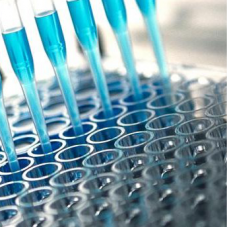Shopping Cart
0 item(s) - $0.00Oxycodone ELISA
Availability: In Stock
Add to Compare
Oxycodone is a semisynthetic opioid synthesized from thebaine, an opioid alkaloid found in the Persian poppy, and one of the many alkaloids found in the opium poppy. It is a moderately potent opioid analgesic, generally indicated for relief of moderate to severe pain. Oxycodone was developed in 1917 in Germany as one of several semi-synthetic opioids in an attempt to improve on the existing opioids.
Oxycodone is available as single-ingredient medication in immediate release and controlled release. Parenteral formulations of 10 mg/mL and 50 mg/mL are available in the UK for IV/IM administration. Combination products are also available as immediate-release formulations, with non-narcotic analgesic ingredients such as paracetamol (acetaminophen) and nonsteroidal anti-inflammatory drugs (NSAIDs), including aspirin and ibuprofen. An abuse-deterrent combination with naloxone is available in managed-release tablets. If injected, the naloxone precipitates opioid withdrawal symptoms and blocks the effect of the medication.
FORENSIC USE ONLY
| General | |
| ANALYTE GROUP | Oxycodone |
| GROUPING | Drugs of Abuse |
| ELISA | |
| TESTS PER KIT | 96 |
| CALIBRATION RANGE | 10 - 80 ng/mL (Recommended) |
| CUTOFF | 10 ng/mL |
| CROSS REACTIVITY (POSITIVE) | Codeine, Ethylmorphine, Hydrocodone, Oxymorphone |
| CROSS REACTIVITY (NEGATIVE) | Diacetylmorphine (Heroin), 6-MAM, Morphine, Morphine 3BDG, Naloxone, Thebaine |
United Immunoassay, Inc. © 2025


































